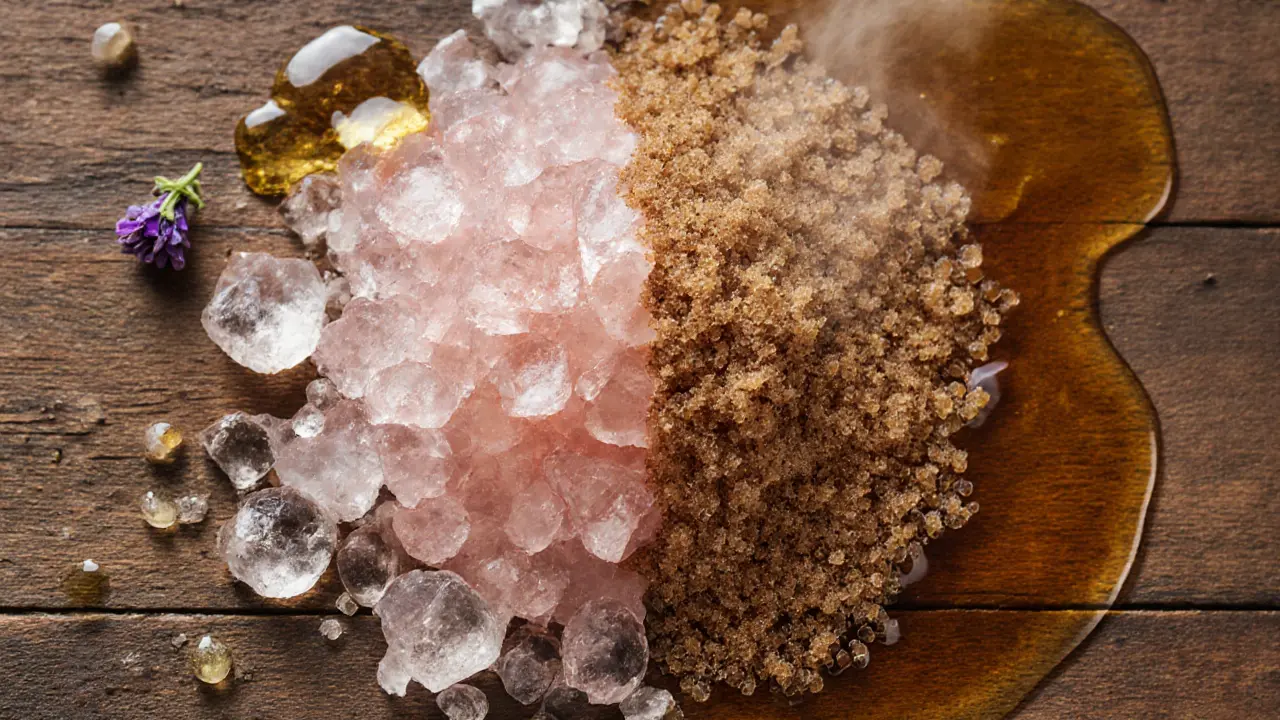
Salt vs Sugar Scrub: Which Works Better for Your Skin?
Discover whether a salt scrub or sugar scrub is best for your skin. Learn benefits, types, DIY recipes, application tips, safety advice, and a side‑by‑side comparison.
If you’ve ever walked out of a spa feeling fresh, chances are a salt scrub was part of the treatment. It’s basically coarse salt mixed with oils or scents to slough off dead skin cells. The result? Smoother, softer skin that drinks up moisture faster. Many people notice their skin looks brighter right after, and the exfoliation helps products absorb better.
In Dubai’s hot climate, a good salt scrub can also keep sweat and sand from clogging pores. It’s a quick way to reset after a day at the beach or a workout. Plus, the mineral content in sea salt—like magnesium and potassium—can soothe minor inflammation.
First off, the texture of salt is perfect for physical exfoliation. It scrapes off rough patches without the harsh chemicals you find in some scrubs. That means fewer chances of irritation, especially for normal to oily skin types. Second, the natural salts contain trace minerals that can improve circulation and reduce tension when massaged onto the body.
Another perk is versatility. You can use a salt scrub on your face (with very fine salt), body, or even on feet before a pedicure. It’s also a great pre‑massage ritual because it clears the skin, allowing the therapist’s oils to glide more smoothly.
Making a salt scrub at home is cheaper than a spa and you control the ingredients. Here’s a basic recipe: ½ cup fine sea salt, ¼ cup coconut oil, a few drops of your favorite essential oil (like lavender or citrus). Mix until you get a gritty paste. Store in a glass jar and keep it in a cool place.For a brighter face, substitute the sea salt with finely ground pink Himalayan salt and add 1 tablespoon of honey for extra hydration. If your skin is sensitive, reduce the salt amount and blend with oatmeal for a gentler texture.
To use, dampen your skin in the shower, apply a small amount of scrub, and massage in circular motions for 30‑60 seconds. Focus on elbows, knees, and any rough spots. Rinse thoroughly with warm water, then follow up with a moisturizer. Most experts recommend 1‑2 times a week; over‑scrubbing can strip natural oils.
If you’d rather skip the DIY route, Dubai has several spas that specialize in salt scrub treatments. The Spa at The Palace Downtown offers a signature “Arabian Sea Salt” ritual that includes a body scrub, warm wrap, and a calming massage. For a more affordable option, check out the Emirates Aquarium Spa, which pairs a salt scrub with a marine‑themed hydrotherapy session.
When booking, ask whether the scrub uses fine or coarse salt. Fine salt is better for the face, while coarse granules work well for the body. Also, inquire about any added fragrances if you have sensitive skin.
Safety note: Never use a salt scrub on broken skin, open wounds, or sunburned areas. The abrasive texture can cause irritation. If you have eczema or rosacea, test a tiny patch first or stick to a milder, sugar‑based scrub.
In summary, a salt scrub is a simple, cost‑effective way to keep your skin smooth and radiant, whether you DIY at home or enjoy a professional treatment in Dubai. Try it once a week and notice the difference for yourself.

Discover whether a salt scrub or sugar scrub is best for your skin. Learn benefits, types, DIY recipes, application tips, safety advice, and a side‑by‑side comparison.